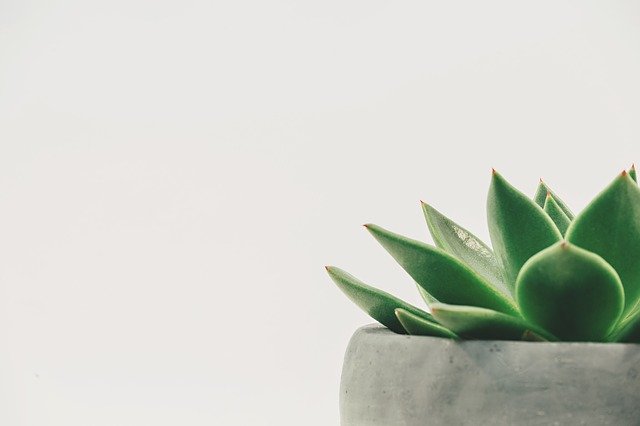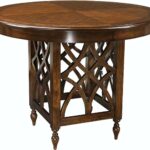Because the environment in restrooms might be a bit unpredictable, you don’t frequently see a lot of plants there. Depending on how many windows there are and which way they face, bathrooms can have a lot (or a little) of sunlight, variable temperatures, and consistent humidity. To survive those kinds of unpredictable conditions, you need tough plant babies, and fortunately for us, there are lots of options available. The article will give useful tips on how to choose bathroom hanging plants.
Table of Contents
Consider Things
Humidity & Light
Because of its dampness, the bathroom is a great place for indoor plants. However, keep in mind that your plant will also require other things. Before adding plants to your bathroom, think about things like lighting and temperature. If your bathroom doesn’t receive much natural light, consider adding additional grow lights or choosing a plant that can survive in low light. Because certain plants cannot survive chilly gusts, you should also consider the temperature in your bathroom.
Methods for hanging plants in homes
Naturally, the next step is to pick how to hang your indoor plants. When creating a plant paradise in the shower, be imaginative with the location. If your planter isn’t too heavy, showerheads, caddies, shower rods, and curtain rods are excellent places to hang vegetation. Heavy-duty utility hooks that stick to tiles are another option.
Plastic planters are the best option for hanging plants in the bathroom because they’re lightweight and simple to maintain. Make sure living plants are not placed in areas where they can directly contact water. You risk having damp soil, and even worse, root rot in your plant. Choose containers with drainage holes to let excess water out if water occasionally touches your plant.
Spider Plant
A native of South Africa, the spider plant (chlorophytum comosum) adds color to the bathroom with its white, green, and yellowish-green striped leaves. To create new plants, slender, erect foliage sprouts pups or offshoots.
Because spider plants enjoy a warm climate (55°F to 80°F) and permeable, equally damp soil, the humid bathroom is the perfect environment for them. Give a spider plant plenty of direct, strong light.
Prayer Plant
Prayer plants are well-suited as shower companions despite their reputation for developing crispy edges since they require high humidity. In reality, these plants fall within the genera maranta, stromanthe, ctenanthe, and calathea. They have exquisitely designed leaves that, when folded at night and when lowered during the day, resemble hands raised in prayer. Installing a shower filter or preventing them from coming into direct touch with your water stream will help those who are sensitive to the minerals in hard water.
Weeping Figs
Weeping figs, also known as ficus benjamina in botanical terms, thrive in humid environments, making them ideal bathroom plants. Figs are finicky, but as long as you provide them with bright indirect light, they’ll be content. Make sure your bathroom doesn’t get too cold because a weeping fig could drop leaves if you leave it in a chilly, drafty space.
You can put a variety of various plants in the shower with a few tweaks and tools. Your plants will thrive in a damp sauna, and you may enjoy a green, spa-like environment by adding foliage to your bathroom.
Philodendron
The tropical philodendron, sometimes known as the sweetheart plant, is a native of South America. Its foliage is lustrous and either dark green or reddish-bronze in color. Strong, heart-shaped leaves (P. headeraceum) are frequently seen on vine and non-climbing kinds, but you can also choose from leaf types with arrow or forked shapes (P. erubesens or P. bipinnatifidum). Popular hanging plants with a 4-foot maximum height that can be trained to climb or dangle are vine variety.
Philodendron thrives best in a humid bathroom environment. It favors moist, permeable soil and warm temperatures (between 65°F and 78°F). Philodendron can endure low light levels and produces rich foliage in bright, indirect sunshine.
Pothos
Your attention will be drawn to the delectable pothos (epipremnum aureum), also known as Devil’s ivy, by its heart-shaped, variegated leaves. Different types have flecks of color that are mainly yellow (golden pothos), white (marble pothos), or green (jade pothos). Pothos grows slowly yet steadily, eventually expanding to a length of six to ten feet.
Pothos is a plant that naturally thrives in the Solomon Islands’ rainforests, and it will fit right in in a bathroom setting. Warm temperatures between 70°F and 90°F and moist, permeable soil are preferred for it. Low to moderate lighting is ideal because Pathos enjoys the shade.
Be aware that pathos is a dangerous plant. Skin irritation from the sap might occur, and vomiting can result from eating the stem or the leaves. Despite the fact that it rarely causes death, pathos should be kept away from children and animals.
English Ivy
Northern and central Europe is home to Hedera helix, sometimes known as English ivy. English ivy is a woody vine with heart-shaped, dark green or variegated whiteish-green leaves that cascades elegantly from a hanging pot.
English ivy prefers high humidity and moderate temperatures (65°F to 78°F), while not being a tropical plant. In between waterings, err on the side of caution and keep the soil moist. Bright to moderate indirect lighting is ideal for English ivy growth.

Sword Fern
Polystichum munitum, a sword fern that is native to North America, is a woodsy plant that adapts wonderfully to indoor growing. For a bushy, lush appearance, strong, sword-shaped fronds overflow hanging pots. Brighter and darker greens in vivid hues enliven any room.
Sword ferns are a great choice for the bathroom because they naturally flourish on forest floors. Sword ferns favor moist soil of any kind and temperatures between 50°F and 70°F. Sword ferns thrive in the shade and need just moderate to low sunlight.
Eucalyptus
Showers with eucalyptus plants have been trending on social media. Eucalyptus branches can be cut off and left in your shower for around two months to properly dry out. For an added touch of style in your bathroom, twine-tie them to your showerhead. The eucalyptus releases oils into the shower that have a calming, aromatherapeutic scent.
Asparagus Fern
The asparagus fern (asparagus setaceus), also known as lace fern, bride’s bouquet fern, and climbing asparagus, is not a true fern. It is an evergreen, herbaceous vine. Wiry stems that can reach heights of three feet are adorned with feathery, fern-like foliage. Every year, little white blossoms appear, followed by green berries that eventually turn black. The asparagus fern is a bushy-looking hanging plant.
The toilet is the perfect place for asparagus ferns because they enjoy humid environments. Asparagus ferns thrive at warm temperatures (60°F to 72°F) and in pliable, moist soil. The ideal lighting situation for asparagus ferns is bright, indirect sunshine.
Begonia
The Begoniaceae family contains more than 1,600 species of begonia, making it difficult to choose the ideal plant for your house. Begonia cultivars with either fibrous roots or a rhizome typically thrive inside, so let’s get to the root of it.
Both begonia variants with flowers and those with foliage have vibrant colors. Begonias that flower produce white, yellow, salmon, crimson, or pink blossoms. Variegated leaves in hues of red, purple, grey, silver, or green are displayed by foliage begonias. A leaf may be heart-shaped, star-shaped, oval-shaped, or even have wings.
Begonias prefer humid environments that are warm (62°F to 72°F), like the one in your bathroom. Keep the soil moist and let it somewhat dry out in between waterings. Give flowers plenty of direct, bright sunshine to grow best. Some foliage kinds like low light levels, however, make sure your growing
Summary
The article gave useful tips on how to choose bathroom hanging plants. Over the past few years, houseplants have gained popularity to the point that it’s safe to say they’re a décor must. Additionally, the tendency is now present in every part of the house, including the restroom. Although it can seem strange to have plants there, having greenery there will give you the impression that you’re on a tropical vacation, and who doesn’t want that? They thrive there, together with well-known species like fiddle-leaf figs and snake plants. As you can see, increased humidity levels enable many plants to thrive.













